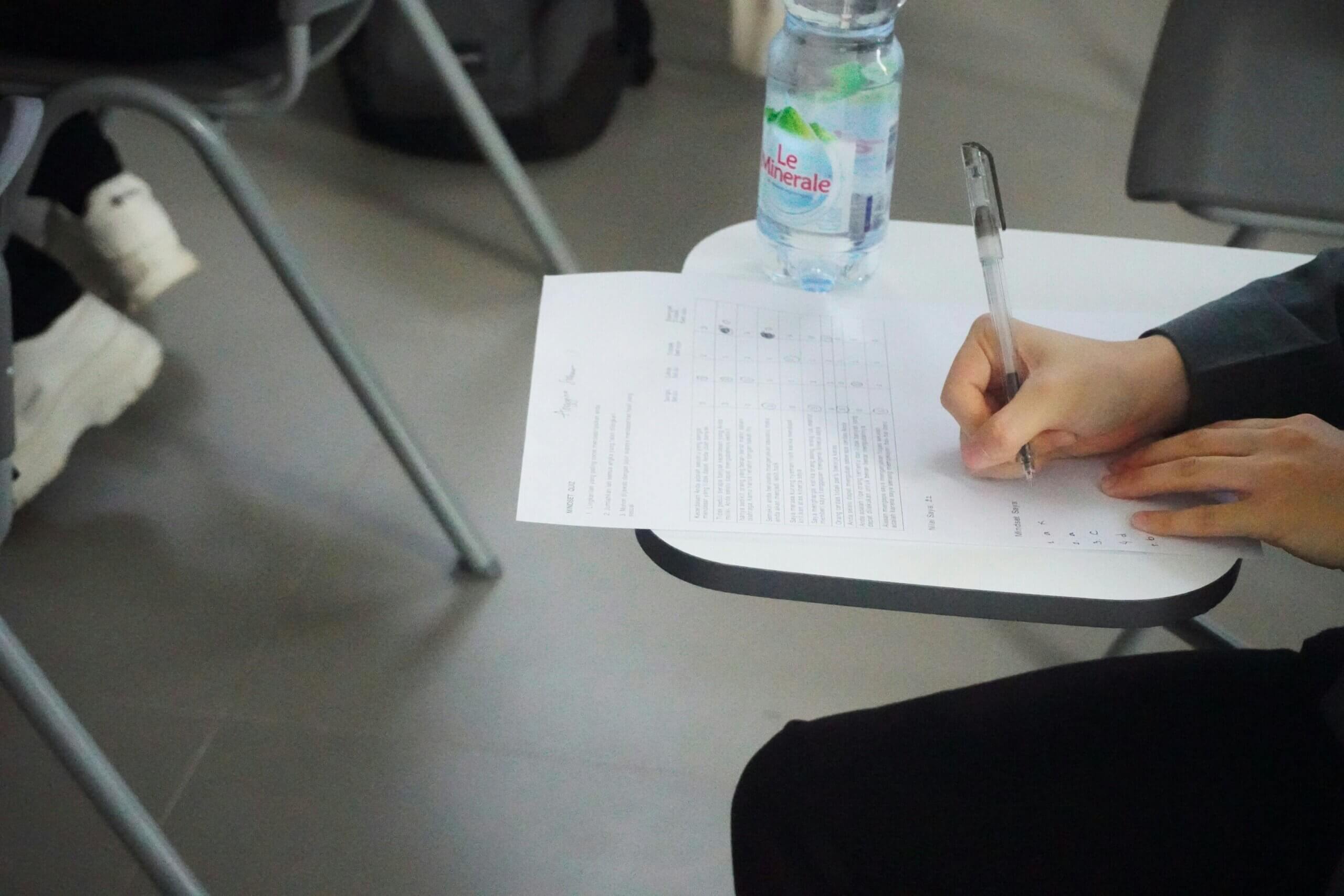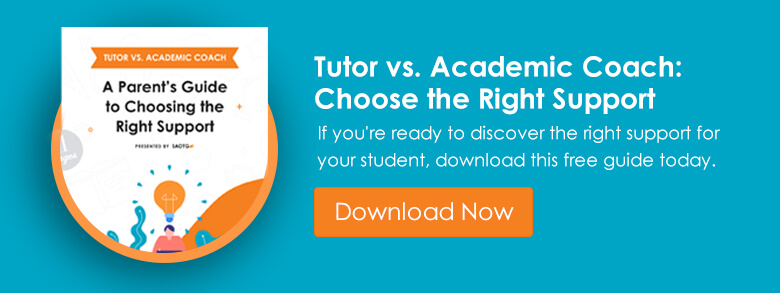This is usually the month when final exam preparation finally becomes tangible. For months, students and teachers discuss cumulative exams in the abstract; this is when things get real. End-of-year assessments are not just tests of knowledge, but trials of organized thought and sustained focus. By integrating three simple principles we can help students develop the mindset and methods to tackle the unique challenges of cumulative exams.
The final stretch leading up to exams is a mosaic of challenges and opportunities. It is a crucible where the mettle of each student is tested in one way above all others: who can marshal their time and resources effectively? Below we explain three principles to help students conquer the buildup to cumulative exams.
Principle #1 Ideal Week
Achieving clarity and purpose in one’s actions is often a challenge, especially when preparing for exams. Clarity becomes essential. The concept of an ideal week serves as a guiding framework through the dense schedule of academic responsibilities, providing clear and structured time management. This framework isn’t just a schedule; it’s a strategic plan that integrates study sessions, revision periods, and tutoring appointments into a cohesive whole, ensuring that every subject receives the attention it deserves. By transforming the daunting task of exam preparation into a series of manageable, scheduled commitments, the ideal week guarantees that no aspect of a student’s academic life is left behind.
At the core of this approach is the understanding that exams are significant markers of academic progress, necessitating a disciplined yet flexible study regime. The ideal week embodies this balance by allocating time for both academic pursuits and personal rejuvenation. It recognizes the importance of well-being, incorporating activities such as morning runs or family dinners to prevent burnout. Despite its structured nature, the framework is designed to accommodate adjustments, allowing students to modify their schedules based on their understanding of the material or the need for extra focus on challenging topics.
Before delving into the specifics of how to craft an ideal week, it’s helpful to consider why it’s so effective beyond the academic realm. Businesses and world class athletes use the ideal week system to stay on track. The key to its effectiveness lies in its mobilization of pattern recognition.
Students can recognize patterns. They can likely outline what an ideal week looks like by reflecting on their most productive periods. What activities or habits were present during those times? Similarly, identifying what constitutes an unideal week—recognizing those elements that derail progress—is equally valuable. This introspective approach helps students pinpoint critical priorities, such as sleep, consistent study times, and exercise, that should be prominently featured in their calendars. Conversely, it highlights distractions or unproductive habits to avoid. By thinking along these lines, students lay the groundwork for a schedule that not only maximizes productivity but also aligns with their personal and academic goals, crafting a week that best supports their success.
Now, how do we turn these reflective insights into action? The practical implementation of the ideal week benefits greatly from visual planning tools. These tools turn the abstract concept of time management into something tangible and manageable. Whether through digital platforms or physical planners, these aids present a visual overview of the week, delineating study periods, leisure time, and other commitments in color-coded formats. Digital tools, such as Google Calendar or specialized study apps offer customization and reminders, catering to the dynamic academic landscape. On the other hand, traditional planners and wall calendars allow for a more hands-on planning experience, enabling students to physically map out their weeks with pens, markers, and sticky notes for a personalized touch.
Both digital and physical planning tools are instrumental in helping students externalize and manage their commitments effectively. This holistic view of weekly obligations ensures that students can adjust their schedules to suit their individual needs and preferences, promoting a flexible yet structured approach to time management. The primary goal of the ideal week is not just academic success but fostering a balanced, enjoyable routine that supports overall well-being.
In addition to structured study times, the ideal week places significant emphasis on personal time, recognizing its vital role in maintaining mental and emotional equilibrium. Moments of relaxation and leisure act as a necessary counterbalance to intensive study sessions, essential for keeping students refreshed and focused. This balanced approach underscores the importance of adaptability, enabling students to respond to unexpected academic challenges with resilience. Ultimately, the ideal week is more than a study strategy; it is a comprehensive approach to managing time and priorities, transforming ambitions into actionable, achievable plans.
We want to fashion a script that guides each student’s performance. Alongside the ideal week template, students need clear progress markers. It’s not enough to merely study; students need a roadmap that details what to study, how deeply, and to what end. This is where setting clear, measurable goals—and defining key performance indicators (KPIs) for each—transforms vague aspirations into concrete plans.
Principle #2: Adapting KPI Concept for Student Life
At the core of effective goal-setting is specificity. Instead of a nebulous aim to “study history,” a detailed goal would be to “understand and summarize the causes and effects of the Civil War by Thursday.” This level of detail brings focus and direction, allowing students to channel their efforts efficiently. Measurable goals also give students and their mentors—the parents and teachers supporting them—a shared language of progress. Each completed summary, every practice problem solved, ticks a box that is visible to all, providing a clear indicator of progress.
KPIs, commonly leveraged in the business world to gauge performance, are equally valuable in the realm of academics. They offer benchmarks that can be as granular as the percentage of practice questions a student answers correctly or as broad as a self-assessed comfort level with exam material. When defined well, KPIs cut through the clutter of subjective self-assessment, providing a pragmatic gauge of readiness.
Yet students must also learn to be agile. A strategy that doesn’t yield the expected results is a signpost for change, not a cue for resignation. If a particular KPI suggests that a study method isn’t effective, it’s an opportunity for the student to consult with a teacher or coach, to re-evaluate and adjust the approach. This agility—this willingness to pivot—is as crucial as the commitment to the goals themselves.
Principle #3: Control the Environment
Last, but certainly not least, students need to control their environment. A clear template for the week and some well-crafted KPIs won’t be effective if the student ignores the importance of their environment. As exams approach, a student’s study area transforms into a central hub for focus and productivity. It’s important to remember that the space where a student studies isn’t just a background setting; it actively influences the study experience.
The first step in creating an effective study environment is to ensure it’s organized and clutter-free. A messy desk can lead to a distracted mind. However, this doesn’t mean the space has to be stark or uninviting. Personal touches are important, as long as they serve a purpose. This could be anything from a motivational poster that boosts morale to a set of highlighters for efficient note-taking.
Lighting is another critical aspect, yet it’s often neglected. Natural light is best, fostering concentration without causing fatigue, but if that’s not possible, a good desk lamp that brightens the space without being harsh can make a big difference. The aim is to create an area that’s both comfortable and stimulating, a haven for focused study amidst the stress of exam prep.
Noise levels are equally important. Some students find background noise, like the buzz of a coffee shop or the quiet atmosphere of a library, helps them concentrate better. Others need complete silence to focus. For those who prefer a quiet environment, noise-canceling headphones or a white noise machine can be very helpful.
The digital landscape of the study environment is as important as the physical one. Online distractions are always within reach, threatening to break concentration. Implementing digital discipline is crucial—this could mean using apps that block distracting websites or setting aside specific times when technology is off-limits to ensure that focus remains intact.
Creating an optimized study environment is about making a space where students can thrive academically. It’s about building a personalized area that supports deep focus and productivity, essential for doing well on exams. For parents and teachers looking to support their students, helping them create such an environment is key. It’s not just about physical space but also about fostering an atmosphere where students can excel. This support is a vital part of helping students achieve their academic goals, demonstrating the significant role that a well-thought-out study space plays in the journey toward academic success.
Closing Thoughts
In the march towards final exams, it’s the thoughtful synthesis of an ideal week, the clarity of well-defined goals, and the sanctity of a tuned environment that sets the stage for triumph. In short, Executive Function (EF) is the key to conquering cumulative exams.
For more EF-driven strategies, insights, and resources, please visit our blog page. For more information on our one-on-one academic coaching program, please visit this page.





